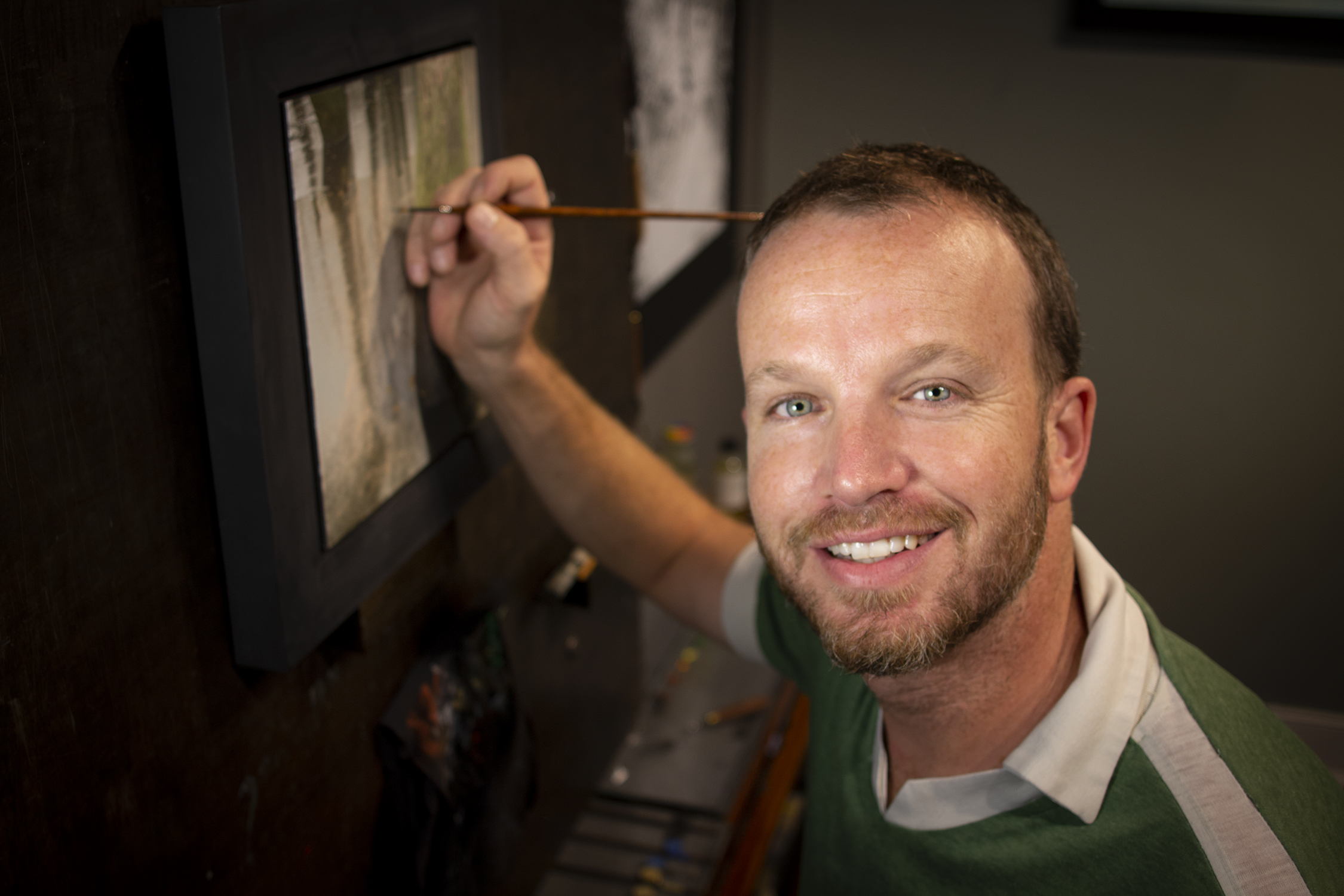At work in my studio…
My style is a modern update of the rich American Landscape tradition. I paint almost exclusively in oils for the extended length of time they allow me to complete a section of painting and the depth of their color. My process begins with a place, and often the journey to get there. I will photograph the place using wide format techniques, perched atop a ladder, up a mast, or belly down in the mud to gain the specific perspective that the place demands. From these series of photographs, I winnow down the compilation of images to use as a reference for the place. Somewhere between those references (which I use for the detail the photograph captures) and my memory of the place (feelings and emotions represented in color and hues) is where the painting ultimately lies. At this point I cut and then prepare the panel and make its frame, a housing for both the structural needs of the panel and the aesthetic needs of the painting. I paint the first layer of opaque paint as a form of rough draft, trying to find color and shape that represents the place. This also allows me to practice how the shapes of that particular place are created and how they work together. Once the surface of the painting is fully covered I stop and study what I have done, deciding where the painting needs to go. This can be for days, weeks, or sometimes a month or more simply staring and deciding. When I know, the painting gets sanded to remove all of the history of surface manipulation (brushstrokes, panel imperfections, etc.) leaving a glass-like surface of paint and painting ground. I mix the colors against the colors I used in the first layer to make very specific, finite changes in the tones and hues. From here I am freed to focus solely on the detail, which I capture in the second layer of opaque paint. Often I will then paint a mostly transparent glaze layer over the second layer to highlight the intrinsic atmosphere. Finally the painting is varnished to unify the painting surface, once again dictated by the demands of the place. For example a seascape may have a matte varnish for the sky, which transitions to satin for the distant water, which transitions to glossy for the foreground water, mimicking nature’s design. Feel free to explore the videos below to see different parts of this process in application:








